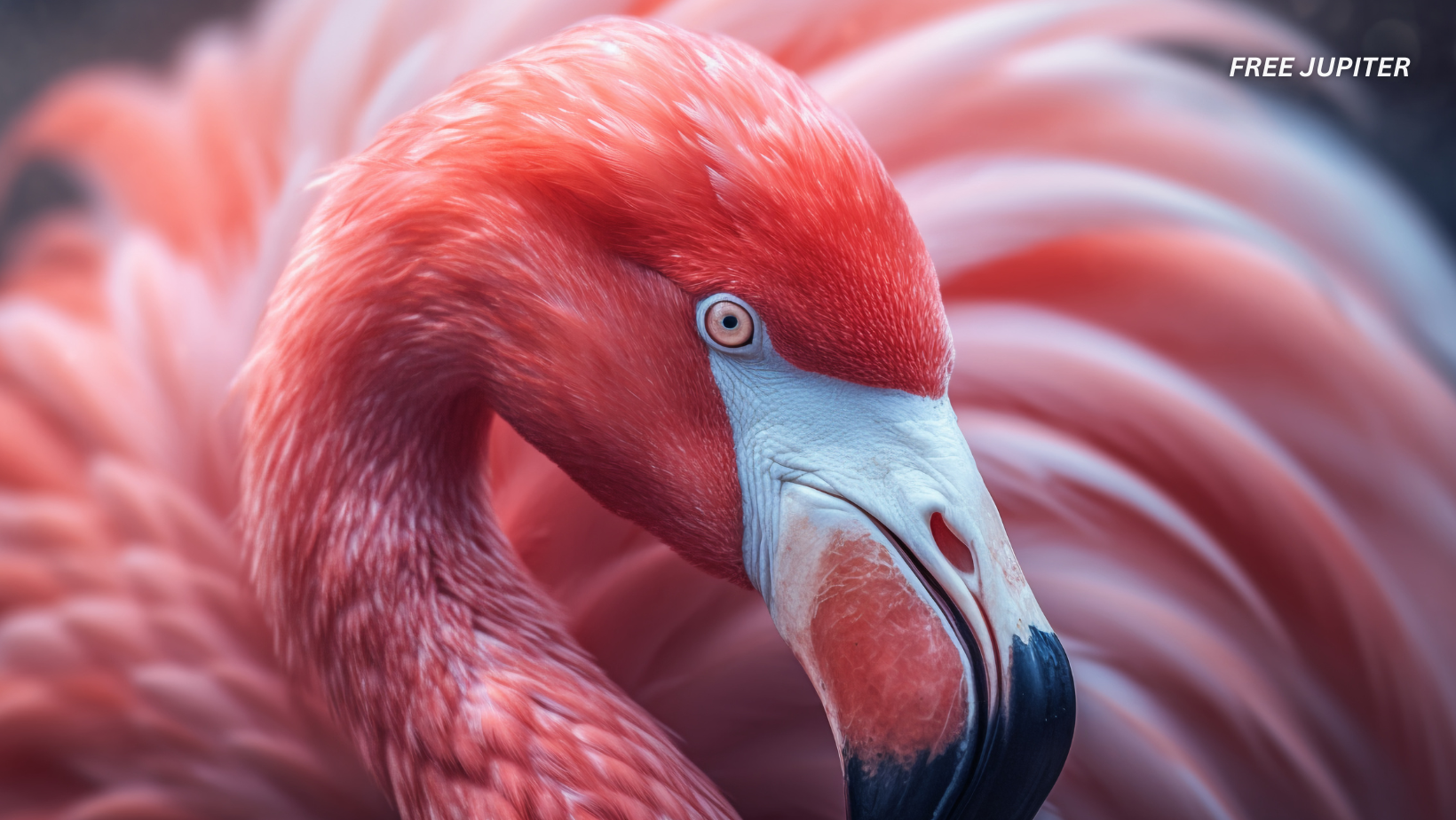Friendly Note: FreeJupiter.com shares general info for curious minds 🌟 Please fact-check all claims—and always check health matters with a professional 💙
Flamingos have long captured the imagination of nature enthusiasts with their striking pink feathers and graceful, statuesque poses in shallow lakes and lagoons. Yet, beneath this seemingly tranquil exterior lies a remarkable and complex feeding system that has only recently begun to be fully understood. Far from being passive filter feeders, flamingos actively engineer their aquatic environment, creating intricate underwater vortexes to corral and capture elusive prey. This discovery not only revolutionizes our understanding of flamingo ecology but also offers promising insights for biomimetic technologies.
The Hidden World Beneath the Surface: Flamingos as Active Predators
When observing a flamingo feeding, one might imagine the bird simply sifting through water, filtering out tiny particles with minimal effort. However, recent biomechanical research reveals a far more dynamic process. These birds use a combination of movements-stomping their feet, plunging their heads, and rapidly clapping their uniquely shaped beaks-to generate swirling water currents that trap and concentrate small aquatic animals such as brine shrimp (Artemia spp.) and copepods.
Victor Ortega Jiménez, an assistant professor at the University of California, Berkeley, who specializes in integrative biology and biomechanics, describes flamingos as active predators. He compares their feeding strategy to a spider weaving a web to trap insects: flamingos create hydrodynamic traps in the form of vortices, which are essentially tiny underwater tornadoes that corral prey.
Read more: Recordings Showing Orcas Mimicking Human Speech is Freaking Listeners Out
Step One: The Floppy Feet That Stir the Sediment
The feeding process begins with the flamingo’s feet, which are webbed but notably flexible and floppy. Unlike rigid paddles that would create suction and hinder movement in muddy substrates, flamingo feet collapse and flex, allowing the bird to lift them easily without sticking. This flexibility is essential for their characteristic “stomp dance,” where the bird rhythmically stamps or rotates its feet in place.
This stomping action churns up bottom sediment, dislodging prey hidden in the mud and propelling sediment and water forward in swirling vortex rings. These foot-generated vortices lift prey into the water column, making them accessible to the bird’s beak. Computational fluid dynamics (CFD) simulations and physical models demonstrate that flexible feet produce coherent vortex structures, whereas rigid feet create chaotic turbulence that is less effective at moving particles.
Step Two: The Head’s Plunging Motion Creates Vertical Vortices
Once the sediment and prey are suspended, the flamingo uses rapid, upward jerks of its head to pull the water column into vertical vortexes. This motion acts like a plunger, drawing sediment-laden water upward in swirling currents. The bird’s head remains inverted underwater during this process, positioning the beak optimally to capture prey.
High-speed video analysis shows that flamingos move their heads at speeds of approximately 40 centimeters per second during these jerks. The resulting vortices are strong enough to trap agile prey such as brine shrimp and copepods, which otherwise might evade capture.
The Ingenious L-Shaped Beak: A Hydrodynamic Tool
Perhaps the most fascinating aspect of flamingo feeding is their uniquely shaped beak. The beak is flattened and bent in an L-shape, designed so that when the bird’s head is submerged upside down, the flat surface aligns parallel to the lakebed. This orientation allows flamingos to employ a feeding technique called skimming.
During feeding, the flamingo rapidly claps its lower mandible against the upper mandible in a motion known as “chattering,” occurring about twelve times per second. This rapid beak movement generates sheet-like vortices called von Kármán vortex streets along the edges of the beak. These vortices recirculate water and prey, effectively herding the animals toward the mouth’s filtering structures.
Experiments using 3D-printed beak models attached to mechanical actuators have demonstrated that chattering increases prey capture rates by a factor of seven compared to static beaks. This highlights the critical role of beak movement in feeding efficiency.
Read more: These Parrots Were Taught To Make Video Calls—and They Absolutely Love It
Filtering and Suction: The Mouth’s Intricate Machinery
Inside the beak, flamingos possess specialized comb-like lamellae that filter food from water and sediment. Their large, piston-like tongue works in concert with these filters, sucking water into the mouth and pushing it out through the sides, trapping prey inside.
Recent anatomical studies using advanced imaging techniques have revealed erectile tissue on the floor of the mouth that stiffens during feeding, stabilizing the tongue and enhancing suction power. This adaptation allows flamingos to efficiently filter food even in briny or otherwise challenging water conditions.
Redefining Flamingos: Active Hunters, Not Passive Feeders
This body of research challenges the long-standing notion of flamingos as passive filter feeders. Instead, they are active hunters, manipulating their environment to capture live, mobile prey. Functional response experiments with captive flamingos show that their feeding rates increase asymptotically with prey density, indicating an evolved strategy optimized for capturing agile prey rather than passively filtering particles.
Ecological Significance: Flamingos in Their Habitats
Flamingos play a vital role in their ecosystems as both predators and ecosystem engineers. By stirring sediment and controlling populations of small aquatic invertebrates, they influence nutrient cycling and water clarity in their habitats.
Their feeding strategy also allows them to thrive in extreme environments, such as highly alkaline or saline lakes where few other animals can survive. The ability to filter out toxic particles and feed efficiently in such conditions is a testament to their specialized adaptations.
Technological Inspirations: Biomimicry from Flamingo Feeding
The principles underlying flamingo feeding have exciting implications beyond biology. The ability to generate controlled vortices that concentrate particles could inspire new filtration systems designed to remove microplastics and other contaminants from water bodies.
The flexible foot design and unique walking technique of flamingos may inform the development of amphibious robots capable of navigating muddy or aquatic environments. Such robots could be invaluable for environmental monitoring, search and rescue operations, or scientific exploration in challenging terrains.
The Research Journey: From Zoo Observations to Fluid Dynamics
Victor Ortega Jiménez’s fascination with flamingo feeding began during a family visit to Zoo Atlanta, where he noticed subtle ripples on the water’s surface but wondered about the hidden dynamics below. This curiosity sparked a multi-institutional research project involving the University of California, Berkeley; Georgia Institute of Technology; Kennesaw State University; and the Nashville Zoo.
The team used a combination of methods, including high-speed videography, laser illumination of gas bubbles to visualize water flow, 3D printing of flamingo feet and beak models, and computational fluid dynamics simulations. These approaches allowed them to dissect the complex interplay of anatomy and fluid mechanics that underpins flamingo feeding.
Read more: Florida Man Gored by Massive Bison at Yellowstone After Ignoring Wildlife Distance Guidelines
Future Directions: Unraveling More Mysteries
Ongoing research aims to further understand the role of the flamingo’s piston-like tongue and the detailed function of the lamellae filters. Scientists are also investigating how flamingos maintain feeding efficiency in the face of environmental challenges such as habitat degradation and pollution.
Understanding these mechanisms may also provide insights into how flamingos and similar species might adapt to changing ecosystems, informing conservation strategies.
Conclusion: A Symphony of Motion and Physics
Flamingos exemplify nature’s brilliance in combining anatomy, behavior, and physics to solve the challenge of feeding in complex environments. Through the coordinated actions of their feet, heads, necks, and beaks, they create a mesmerizing dance of water and sediment, engineering vortexes that trap and deliver prey.
This discovery not only enriches our appreciation of these iconic birds but also highlights the profound connections between biological form and function. As we continue to explore and learn from the natural world, flamingos stand as a vivid reminder of the ingenuity evolved over millennia, inspiring both scientific inquiry and technological innovation.
Acknowledgments: The research was supported by grants from the National Science Foundation and the Open Philanthropy Project, with contributions from multiple institutions and dedicated cooperation from the flamingos at the Nashville Zoo.
This expanded article offers a comprehensive, detailed exploration of flamingo feeding mechanics, anatomy, ecological role, and the broader implications of this remarkable natural phenomenon. If you would like, I can also provide references or a more technical breakdown of the fluid dynamics involved.










